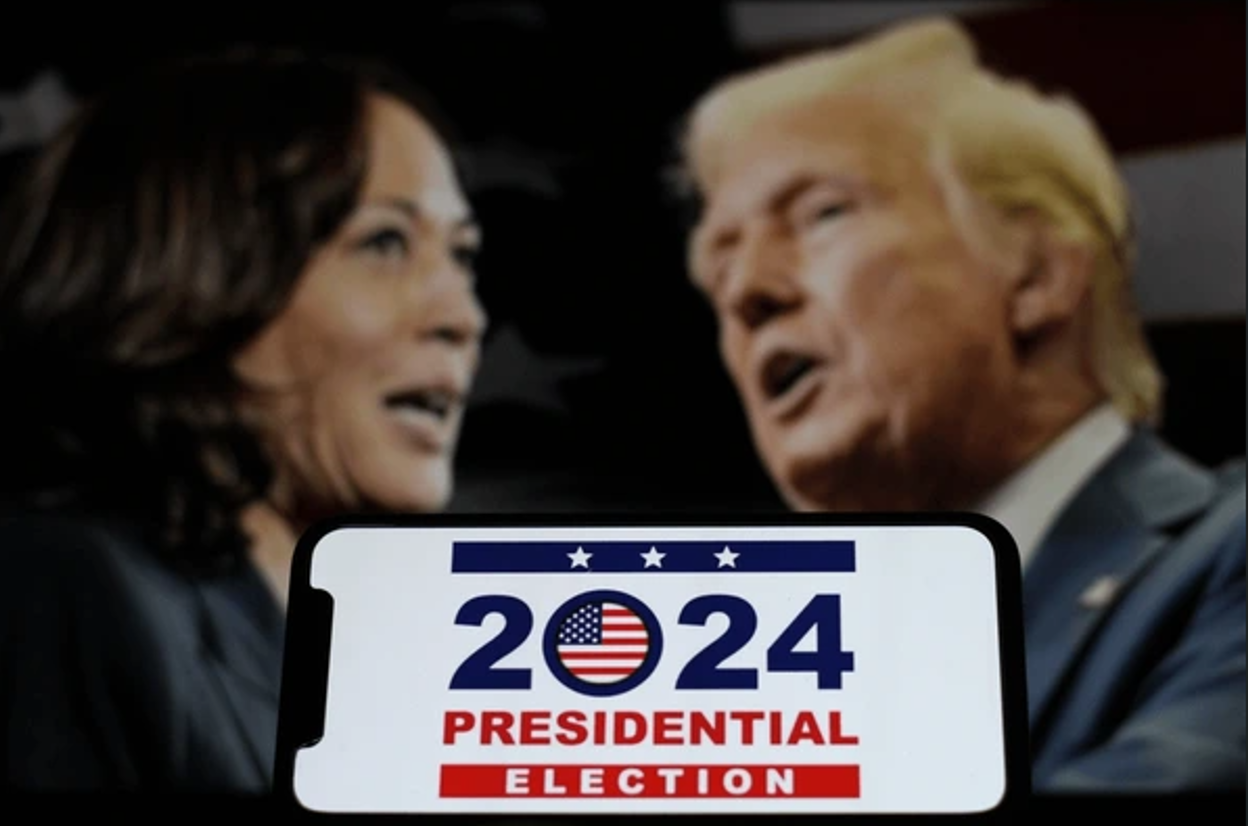By Gregory Korte
Bloomberg News
(TNS)
Donald Trump and Kamala Harris are in a tax policy arms race, copying and one-upping each other’s proposals in a bid to court key battleground state voting blocs ahead of a looming battle in Washington to rewrite the tax code.
The duel highlights the central place of the economy in November’s vote, with American households battered by high costs and the campaigns seeking to emphasize pocketbook issues.
The back-and-forth over taxes has escalated in recent days. In an interview with CBS News over the weekend, Republican vice presidential nominee JD Vance tried to outflank Democrats by floating a $5,000-per-child tax credit—$3,000 more than the size of the current credit and even larger than President Joe Biden has proposed.
Harris, rallying supporters in Nevada, endorsed a version of Trump’s own promise to exempt tipped wages from taxes.
Her pitch, in the same battleground state where Trump made his proposal two months ago, drew the ire of the Republican presidential nominee, who accused his Democratic rival of stealing his idea.
“The tit-for-tat here is amazing,” said Marc Goldwein of the Committee for a Responsible Federal Budget in an interview with Bloomberg’s Balance of Power.
“Joe Biden wants a child tax credit, so JD Vance wants a bigger child tax credit. Donald Trump says, ‘No tax on tips,’ so Kamala Harris says, ‘no taxes on tips,’” he said.
Goldwein, though, raised a critical question: “Who’s going to pay for all this?”
The scope of the tax changes being floated by the candidates could be budget-busting. While the Trump campaign has not released key details of its proposals, increasing the child tax credit could cost $2 trillion over the next decade. If the tax credits are refundable—meaning taxpayers would get money back even if they don’t owe taxes—it could be closer to $3 trillion.
“Detached from reality”
Trump has also proposed ending the tax on Social Security benefits entirely, replacing current policy that gives targeted tax breaks to lower-income seniors. His proposal could cost as much as $1.8 trillion and ultimately endanger the Social Security trust fund itself, according to nonpartisan budget watchers.
Largely absent from the discussion, for now, are the tax cuts from Trump’s 2017 tax law that will expire at the end of 2025. Extending those cuts carries a $4.6 trillion price tag.
“We’re not dealing with the elephant in the room, which is the expiration of the Tax Cuts and Jobs Act,” said Erica York of the nonpartisan Tax Foundation. “It’s scattershot, and it’s really detached from reality.”
None of the proposals being floated give any consideration to how the tax cuts will shift the tax burden—from older taxpayers to younger ones, from parents to people without dependent children, and from tipped workers to salaried ones.
“I wish we were in a situation where they were trying to one-up each other on serious tax proposals,” York said. “But instead the entire discussion is on the silly side of things.”
Election-year politics is driving the frenzy of proposals.
Trump won voters 65 and older by 5 percentage points in 2020, according to network exit polls. A recent New York Times/Siena College poll showed him in a dead heat with that demographic against Harris.
Vance’s child tax credit proposal came during a round of weekend interviews in which he tried to deflect a barrage of attacks over past comments that the U.S. was run by “childless cat ladies.” Saying the tax code should support “pro-family” policies, Vance proposed a massive expansion of the child tax credit, with no income limits. That means middle- and upper-income families will get a bigger benefit from a tax provision that was originally designed as an anti-poverty program.
And it’s no coincidence that Trump first made his no-tax-on-tips pledge at a rally in the critical battleground of Nevada, a state with the largest proportion of food service and accommodations workers in its workforce. Those employees have historically relied on tips.
Guerrilla marketing
Trump has made “no tax on tips” a centerpiece of his stump speech, and his campaign is employing guerrilla marketing tactics to promote the policy. Donors to his campaign can receive stickers that read “VOTE TRUMP FOR NO TAX ON TIPS” to put on their restaurant checks.
Harris, too, chose Las Vegas to make a similar campaign promise to cut taxes on tips—although her proposal would apply only to federal income taxes and leave payroll taxes for Social Security and Medicare intact. That largely accounts for the difference in price tags: about $250 billion over 10 years for the Trump plan, perhaps half that for Harris.
The Trump campaign responded by giving Harris a new nickname: “Copy Cat Kamala Harris.” But the proposal was already generating bipartisan support in Congress, especially among Democratic members of the Nevada delegation.
Vance’s proposal to increase the child tax credit marked an abrupt departure from his party’s orthodoxy. In a Senate vote this month, only three Republicans voted to increase the amount of the refundable credit.
Vance, who was campaigning in Arizona, skipped the vote. He blamed Harris for the measure failing, telling CBS’ Face the Nation that she “failed to show fundamental leadership.”
— With assistance from Joe Mathieu.
_______
©2024 Bloomberg L.P. Visit bloomberg.com. Distributed by Tribune Content Agency LLC.
Thanks for reading CPA Practice Advisor!
Subscribe Already registered? Log In
Need more information? Read the FAQs
Tags: Income Tax, Taxes




